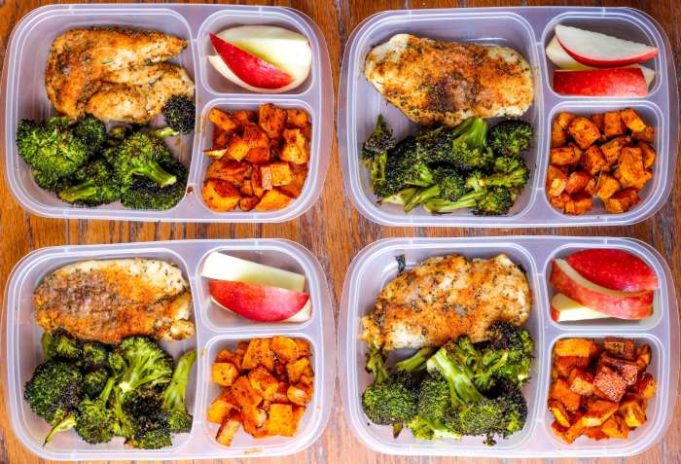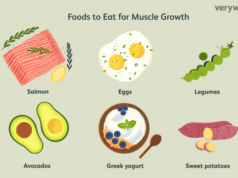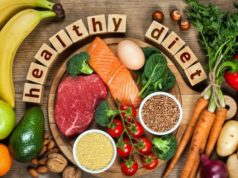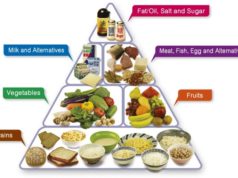Clean diet recipes offer a refreshing approach to healthy eating, emphasizing whole, unprocessed foods that nourish your body from the inside out. This style of cooking focuses on ingredients that are free from artificial additives, refined sugars, and unhealthy fats, prioritizing natural flavors and vibrant colors. Embracing clean eating not only promotes a balanced diet but also encourages a mindful connection with your food choices.
This guide will delve into the fundamentals of clean eating, providing a comprehensive overview of the principles, benefits, and potential drawbacks. We’ll explore a wide array of clean diet recipes, categorized by meal type, and offer tips for creating flavorful and affordable dishes. Whether you’re seeking inspiration for everyday meals or exploring specific dietary needs, this resource will empower you to embrace a clean and nourishing lifestyle.
What is a Clean Diet?
A clean diet is a way of eating that emphasizes whole, unprocessed foods while minimizing or eliminating processed foods, added sugars, and artificial ingredients. It’s not a specific diet plan with rigid rules but rather a philosophy of eating that prioritizes nourishing your body with natural, nutrient-rich foods.
Principles of a Clean Diet
The core principles of a clean diet revolve around consuming whole, minimally processed foods. This involves choosing foods that are as close to their natural state as possible.
Foods to Include in a Clean Diet
A clean diet typically emphasizes these types of foods:
- Fruits and vegetables: Fresh, frozen, or canned fruits and vegetables without added sugars or preservatives.
- Whole grains: Brown rice, quinoa, oats, and whole-wheat bread.
- Lean protein: Fish, poultry, beans, lentils, tofu, and eggs.
- Healthy fats: Olive oil, avocado oil, nuts, seeds, and avocados.
- Water: The primary source of hydration, avoiding sugary drinks.
Benefits of Following a Clean Diet
Adopting a clean diet can contribute to various health benefits, including:
- Improved digestion: The high fiber content in whole foods promotes healthy digestion and regularity.
- Weight management: The focus on whole, unprocessed foods can help with weight management by providing satiety and reducing calorie intake.
- Reduced risk of chronic diseases: A clean diet can lower the risk of developing chronic diseases such as heart disease, type 2 diabetes, and some types of cancer.
- Increased energy levels: The nutrient-rich nature of a clean diet can provide sustained energy throughout the day.
- Improved mental clarity: The focus on whole foods can contribute to better cognitive function and mental clarity.
Potential Drawbacks of a Clean Diet
While a clean diet offers numerous benefits, it’s essential to consider some potential drawbacks:
- Restrictive nature: The emphasis on whole, unprocessed foods can make it challenging to follow, especially when dining out or attending social gatherings.
- Potential for nutrient deficiencies: If not carefully planned, a clean diet could lead to deficiencies in certain nutrients, such as vitamin B12 or iron.
- Cost: Whole, unprocessed foods can be more expensive than processed foods, making a clean diet potentially more costly.
- Social challenges: The restrictive nature of a clean diet can make it difficult to enjoy meals and social events with friends and family who do not follow the same dietary principles.
Clean Diet Recipes for Different Meal Categories
A clean diet emphasizes whole, unprocessed foods, focusing on nutrient-rich ingredients. This approach can benefit overall health and well-being. Here are some clean diet recipes for various meal categories:
Breakfast
Clean diet breakfasts are crucial for a healthy start to your day. They provide sustained energy and support healthy blood sugar levels.
| Meal Category | Recipe Name | Ingredients | Instructions |
|---|---|---|---|
| Breakfast | Overnight Oats | 1/2 cup rolled oats, 1 cup milk (almond, soy, or dairy), 1/4 cup Greek yogurt, 1/4 cup berries, 1 tablespoon chia seeds, 1 teaspoon honey (optional) | Combine oats, milk, yogurt, and chia seeds in a jar. Stir well. Add berries and honey (optional). Refrigerate overnight. |
| Breakfast | Avocado Toast with Egg | 2 slices whole-wheat toast, 1/2 avocado, 1 egg, salt, pepper, red pepper flakes (optional) | Toast bread. Mash avocado and spread on toast. Cook egg to desired doneness. Season with salt, pepper, and red pepper flakes (optional). |
| Breakfast | Smoothie | 1 cup frozen fruit (berries, banana, mango), 1 cup spinach or kale, 1/2 cup almond milk, 1/4 cup Greek yogurt, 1 tablespoon chia seeds, 1/2 teaspoon vanilla extract | Blend all ingredients until smooth. |
Lunch, Clean diet recipes
Clean lunch recipes can be light, satisfying, and packed with nutrients.
| Meal Category | Recipe Name | Ingredients | Instructions |
|---|---|---|---|
| Lunch | Quinoa Salad with Grilled Chicken | 1 cup cooked quinoa, 1 cup grilled chicken, 1/2 cup chopped vegetables (cucumber, bell pepper, onion), 1/4 cup chopped fresh herbs (parsley, cilantro), 1/4 cup olive oil, 2 tablespoons lemon juice, salt, pepper | Combine quinoa, chicken, vegetables, and herbs. Whisk olive oil, lemon juice, salt, and pepper to make a dressing. Pour dressing over salad and toss to combine. |
| Lunch | Tuna Salad Sandwich | 2 slices whole-wheat bread, 1 can tuna (packed in water), 1/4 cup chopped celery, 1/4 cup chopped red onion, 1 tablespoon mayonnaise, 1/2 teaspoon Dijon mustard, salt, pepper | Combine tuna, celery, red onion, mayonnaise, mustard, salt, and pepper. Spread mixture on bread. |
| Lunch | Leftover Chicken Soup | 4 cups chicken broth, 1 cup cooked chicken, 1 cup chopped vegetables (carrots, celery, onion), 1/2 cup cooked rice or noodles, salt, pepper | Combine all ingredients in a pot and simmer until heated through. Season with salt and pepper. |
Dinner
Dinner is a time to enjoy a hearty and flavorful meal.
| Meal Category | Recipe Name | Ingredients | Instructions |
|---|---|---|---|
| Dinner | Salmon with Roasted Vegetables | 1 salmon fillet, 1 cup chopped vegetables (broccoli, carrots, zucchini), 1 tablespoon olive oil, salt, pepper, herbs (thyme, rosemary) | Preheat oven to 400 degrees F (200 degrees C). Toss vegetables with olive oil, salt, pepper, and herbs. Spread vegetables on a baking sheet. Place salmon on top of vegetables. Bake for 15-20 minutes, or until salmon is cooked through. |
| Dinner | Lentil Soup | 1 cup lentils, 4 cups vegetable broth, 1 chopped onion, 2 carrots, 2 celery stalks, 1 teaspoon cumin, 1/2 teaspoon turmeric, salt, pepper | Sauté onion, carrots, and celery in a pot. Add lentils, broth, cumin, and turmeric. Bring to a boil, then reduce heat and simmer for 30 minutes, or until lentils are tender. Season with salt and pepper. |
| Dinner | Chicken Stir-Fry | 1 pound boneless, skinless chicken breasts, 1 cup chopped vegetables (broccoli, bell peppers, onions), 1/4 cup soy sauce, 1 tablespoon honey, 1 tablespoon sesame oil, 1 clove garlic, 1 tablespoon ginger | Cut chicken into bite-sized pieces. Marinate chicken in soy sauce, honey, sesame oil, garlic, and ginger. Stir-fry chicken and vegetables in a pan until cooked through. |
Snacks
Healthy snacks can help keep hunger at bay and prevent overeating at meals.
| Meal Category | Recipe Name | Ingredients | Instructions |
|---|---|---|---|
| Snacks | Fruit and Nut Mix | 1/2 cup mixed nuts (almonds, walnuts, cashews), 1/2 cup dried fruit (raisins, cranberries, apricots), 1/4 cup dark chocolate chips (optional) | Combine nuts, dried fruit, and chocolate chips (optional) in a bowl. |
| Snacks | Hard-Boiled Eggs | Eggs | Place eggs in a pot of cold water. Bring to a boil, then reduce heat and simmer for 10 minutes. Drain and run cold water over eggs until cool. Peel and enjoy. |
| Snacks | Yogurt with Berries | 1 cup Greek yogurt, 1/2 cup berries | Combine yogurt and berries in a bowl. |
Popular Clean Diet Recipes
Clean eating is all about consuming whole, unprocessed foods that are free from artificial ingredients, additives, and refined sugars. This approach to eating emphasizes nutrient-rich foods like fruits, vegetables, lean proteins, and whole grains. There are many popular clean diet recipes that are both delicious and nutritious, catering to different dietary preferences and needs.
Popular Clean Diet Recipes
These recipes are popular due to their simplicity, nutritional value, and delicious taste. They often feature fresh, seasonal ingredients and require minimal preparation time.
- Salmon with Roasted Vegetables: This recipe combines the omega-3 fatty acids found in salmon with the fiber and vitamins from roasted vegetables like broccoli, asparagus, and bell peppers. It is a healthy and satisfying meal that is easy to prepare.
- Chicken Stir-Fry with Brown Rice: This recipe is packed with protein, fiber, and essential vitamins and minerals. The chicken provides lean protein, the vegetables offer a variety of nutrients, and the brown rice provides complex carbohydrates.
- Quinoa Salad with Black Beans and Corn: This recipe is a great source of protein, fiber, and complex carbohydrates. Quinoa is a complete protein, black beans are high in fiber and iron, and corn provides essential vitamins and minerals.
- Avocado Toast with Egg: This simple and delicious recipe is a great source of healthy fats, protein, and fiber. Avocado is rich in monounsaturated fats, which are good for heart health, and eggs provide a good source of protein and choline.
Nutritional Value of Popular Clean Diet Recipes
These recipes are packed with essential nutrients that contribute to overall health and well-being.
- Protein: Clean diet recipes often feature lean protein sources like chicken, fish, beans, and tofu. Protein is essential for building and repairing tissues, maintaining a healthy immune system, and regulating hormones.
- Fiber: Clean diet recipes emphasize fruits, vegetables, and whole grains, which are all good sources of fiber. Fiber helps regulate digestion, promotes satiety, and lowers cholesterol levels.
- Vitamins and Minerals: Clean diet recipes provide a wide range of vitamins and minerals, including vitamins A, C, E, K, and B vitamins, as well as minerals like iron, calcium, and magnesium. These nutrients are essential for various bodily functions, including energy production, cell growth, and immune function.
- Healthy Fats: Clean diet recipes often include healthy fats like those found in avocados, nuts, and olive oil. These fats are essential for hormone production, brain function, and cell health.
Step-by-Step Guide for Preparing Salmon with Roasted Vegetables
This recipe is simple to prepare and requires minimal ingredients.
- Preheat the oven to 400 degrees Fahrenheit (200 degrees Celsius).
- Wash and chop the vegetables. You can use any vegetables you like, but broccoli, asparagus, and bell peppers are good choices.
- Place the vegetables on a baking sheet and drizzle with olive oil. Season with salt, pepper, and any other herbs or spices you like.
- Roast the vegetables for 20-25 minutes, or until tender.
- While the vegetables are roasting, season the salmon with salt, pepper, and any other herbs or spices you like.
- Place the salmon on a baking sheet and bake for 12-15 minutes, or until cooked through.
- Serve the salmon with the roasted vegetables.
Tips for Making Clean Diet Recipes
Embarking on a clean diet journey can be both exciting and challenging. You’ll be making delicious, wholesome meals, but you’ll also need to be mindful of the ingredients you use and the ways you prepare them. Here are some tips to help you navigate the process:
Choosing Clean Ingredients
The foundation of a clean diet is using whole, unprocessed ingredients. Prioritize fresh produce, lean proteins, and healthy fats. Here are some pointers:
- Read labels carefully: Pay attention to ingredients lists and avoid processed foods, artificial sweeteners, trans fats, and excessive amounts of added sugar.
- Choose organic when possible: Opt for organic fruits, vegetables, and meats whenever feasible to minimize exposure to pesticides and herbicides.
- Support local farmers: Shop at farmers’ markets or directly from local farms to access fresh, seasonal produce and build relationships with those who grow your food.
- Prioritize whole grains: Select whole grain breads, cereals, and rice over refined grains. These provide more fiber and nutrients.
- Choose lean proteins: Opt for lean meats, poultry, fish, beans, lentils, and tofu as your primary protein sources.
- Embrace healthy fats: Incorporate avocados, nuts, seeds, olive oil, and coconut oil into your diet for essential fatty acids.
Making Clean Recipes More Flavorful
Clean eating doesn’t mean sacrificing flavor. Here are some ways to elevate your clean diet recipes:
- Embrace herbs and spices: Fresh or dried herbs and spices can add depth and complexity to your dishes. Experiment with different combinations to discover your favorites.
- Use citrus fruits: Lemons, limes, and oranges can provide a bright and refreshing touch to both savory and sweet recipes.
- Don’t be afraid of vinegar: Balsamic, apple cider, and red wine vinegars can add tanginess and depth to sauces and dressings.
- Experiment with different cooking methods: Roasting, grilling, and sauteing can bring out the natural flavors of ingredients.
Making Clean Diet Recipes More Affordable
While clean eating can sometimes seem expensive, there are ways to make it more budget-friendly:
- Plan your meals: Create a weekly meal plan to avoid impulse purchases and reduce food waste. This can also help you buy ingredients in bulk.
- Shop seasonally: Buy produce that is in season, as it will be more affordable and flavorful.
- Cook in bulk: Prepare large batches of meals to freeze and enjoy later. This can save you time and money.
- Get creative with leftovers: Transform leftover ingredients into new dishes. For example, leftover roasted vegetables can be added to salads, soups, or grain bowls.
- Consider meatless meals: Vegetarian and vegan meals can be significantly cheaper than meat-based dishes. Explore recipes that feature beans, lentils, tofu, and other plant-based protein sources.
Clean Diet Recipes for Specific Dietary Needs
Following a clean diet can be challenging for individuals with specific dietary needs. This section will explore clean diet recipes for common dietary restrictions, such as vegan, vegetarian, gluten-free, and dairy-free.
Vegan Clean Diet Recipes
Vegan clean diet recipes emphasize whole, unprocessed plant-based foods. They exclude all animal products, including meat, poultry, fish, eggs, dairy, and honey.
- Lentil Soup with Vegetables: This hearty soup is packed with protein, fiber, and essential nutrients. Combine lentils, chopped vegetables (such as carrots, celery, onions, and spinach), vegetable broth, and spices in a pot and simmer until the lentils are tender.
- Tofu Scramble: A great alternative to eggs, tofu scramble can be made with seasoned tofu, chopped vegetables, and spices. Sauté the tofu in a pan with your favorite vegetables and spices until heated through.
- Vegan Quinoa Salad: This refreshing salad is a great source of protein and fiber. Combine cooked quinoa with chopped vegetables, herbs, and a light vinaigrette.
Vegetarian Clean Diet Recipes
Vegetarian clean diet recipes exclude meat, poultry, and fish but may include eggs and dairy products.
- Chickpea Curry: This flavorful curry is a great source of protein and fiber. Combine chickpeas, chopped vegetables (such as onions, tomatoes, and potatoes), spices, and coconut milk in a pot and simmer until the chickpeas are tender.
- Quinoa and Black Bean Burgers: These flavorful burgers are a great source of protein and fiber. Combine cooked quinoa, black beans, chopped vegetables, and spices and form into patties. Grill or pan-fry until cooked through.
- Spinach and Feta Salad: This refreshing salad is a great source of protein and fiber. Combine chopped spinach, crumbled feta cheese, chopped vegetables, and a light vinaigrette.
Gluten-Free Clean Diet Recipes
Gluten-free clean diet recipes exclude gluten, a protein found in wheat, rye, and barley.
- Chicken and Vegetable Stir-Fry: This quick and easy stir-fry is a great source of protein and fiber. Combine chicken, chopped vegetables (such as broccoli, carrots, and bell peppers), and a gluten-free soy sauce in a pan and stir-fry until cooked through.
- Salmon with Roasted Vegetables: This healthy and flavorful dish is a great source of omega-3 fatty acids. Bake salmon with your favorite roasted vegetables, such as asparagus, zucchini, and bell peppers.
- Gluten-Free Quinoa Pasta with Marinara Sauce: This delicious and nutritious pasta dish is a great source of protein and fiber. Combine cooked quinoa pasta with a homemade marinara sauce.
Dairy-Free Clean Diet Recipes
Dairy-free clean diet recipes exclude dairy products, such as milk, cheese, yogurt, and butter.
- Almond Milk Smoothie: This refreshing smoothie is a great source of protein and fiber. Combine almond milk, fruit, and protein powder in a blender and blend until smooth.
- Coconut Milk Curry: This flavorful curry is a great source of protein and fiber. Combine vegetables, coconut milk, and spices in a pot and simmer until the vegetables are tender.
- Dairy-Free Pizza: This delicious pizza is a great alternative to traditional pizza. Use a gluten-free crust and top with your favorite dairy-free toppings, such as vegetables, meat, and cheese alternatives.
Clean Diet Recipe Resources
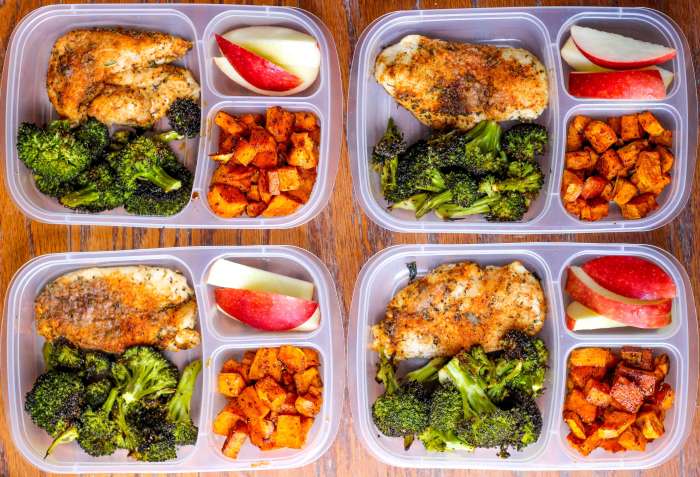
Finding clean diet recipes can be a great way to explore new flavors and discover healthy ways to eat. With a wealth of resources available, you can easily find recipes that align with your clean eating principles.
Websites and Cookbooks
Websites and cookbooks offer a wide range of clean diet recipes, catering to different preferences and dietary needs.
- Websites: Many websites specialize in clean eating recipes. Some popular options include:
- Clean Eating Magazine: This website offers a variety of clean eating recipes, articles, and meal plans. It also provides guidance on healthy eating habits and lifestyle choices.
- The Whole30: This website focuses on the Whole30 program, a 30-day elimination diet that emphasizes whole, unprocessed foods. It offers a wealth of recipes and resources to help you navigate the program.
- Paleo Leap: This website features paleo recipes that are free from grains, legumes, and dairy. It also provides information on paleo living and nutrition.
- Food Network: While not exclusively focused on clean eating, Food Network offers a wide range of recipes, including many that align with clean eating principles.
- Allrecipes: This website is a popular source for recipes of all kinds, including many clean eating options.
- Cookbooks: Several cookbooks offer clean diet recipes, providing inspiration and guidance for your clean eating journey. Some popular options include:
- The Clean Eating Cookbook by Tosca Reno: This cookbook features a collection of recipes that are free from processed foods, refined sugars, and unhealthy fats.
- The Whole30 Cookbook by Melissa Hartwig Urban and Dallas Hartwig: This cookbook offers a range of recipes that are compliant with the Whole30 program, providing delicious and satisfying meals.
- The Paleo Cookbook by Sarah Fragoso: This cookbook features a collection of paleo recipes that are gluten-free, dairy-free, and grain-free.
- The 21-Day Sugar Detox by Diane Sanfilippo: This cookbook offers a 21-day plan to help you reduce your sugar intake and improve your health.
Tips for Finding Credible Sources
It’s important to ensure that the clean diet information you rely on comes from credible sources. Here are some tips:
- Look for Registered Dietitians: Registered dietitians are qualified nutrition professionals who can provide evidence-based information on healthy eating. When choosing recipes or information, look for sources that are authored or reviewed by registered dietitians.
- Check for Scientific Backing: Reputable sources will provide evidence to support their claims. Look for recipes and information that are based on scientific research and backed by reputable studies.
- Be Wary of Extreme Claims: Avoid sources that make unrealistic claims or promote fad diets. Clean eating should be about making sustainable, healthy choices, not about restrictive or extreme measures.
- Consider Multiple Sources: It’s always a good idea to consult multiple sources to get a well-rounded perspective. Compare information from different websites, cookbooks, and experts to ensure you are getting accurate and reliable advice.
Outcome Summary
By incorporating clean diet recipes into your culinary repertoire, you can unlock a world of delicious and wholesome meals that support your overall well-being. Remember, the journey to healthy eating is a personal one, so experiment with different recipes, embrace seasonal ingredients, and prioritize your individual needs. With a little creativity and mindful choices, you can enjoy the benefits of clean eating and cultivate a vibrant and fulfilling relationship with food.
Expert Answers
What are some examples of clean ingredients?
Clean ingredients include fruits, vegetables, whole grains, lean proteins, healthy fats like olive oil and avocados, and nuts and seeds.
Are clean diet recipes expensive?
Clean eating doesn’t have to be expensive. Choose seasonal produce, shop at farmers’ markets, and plan your meals to avoid waste. Prioritize whole foods over processed options, which tend to be more costly.
Can I still enjoy my favorite foods on a clean diet?
Absolutely! You can find clean versions of many popular dishes by substituting processed ingredients with whole, unprocessed alternatives. For example, try using almond flour instead of all-purpose flour in baked goods or making your own salad dressings with fresh herbs and spices.
Clean diet recipes often emphasize whole, unprocessed foods, which are naturally rich in fiber. To get the most out of these recipes, it’s helpful to know how much dietary fiber per day is recommended for your age and gender.
This knowledge can help you create balanced meals that support your digestive health and overall well-being.
Clean diet recipes often focus on whole, unprocessed foods, which can help you feel full and satisfied, making it easier to stick to your healthy eating plan. But does this mean you need to sweat it out at the gym to see results?
Not necessarily! While exercise is important for overall health, you can still lose weight by making smart food choices and following a balanced diet, like the ones you’ll find in our clean eating recipes. Check out our article on do you need to sweat to lose weight to learn more about the relationship between exercise and weight loss.
Clean diet recipes often focus on fresh, whole foods, and a popular choice for many is cabbage soup. If you’re looking to incorporate this into your clean eating plan, check out how to make diet cabbage soup for a simple and flavorful recipe.
You can easily adjust the ingredients to fit your dietary needs and preferences, making it a versatile addition to your clean eating routine.















